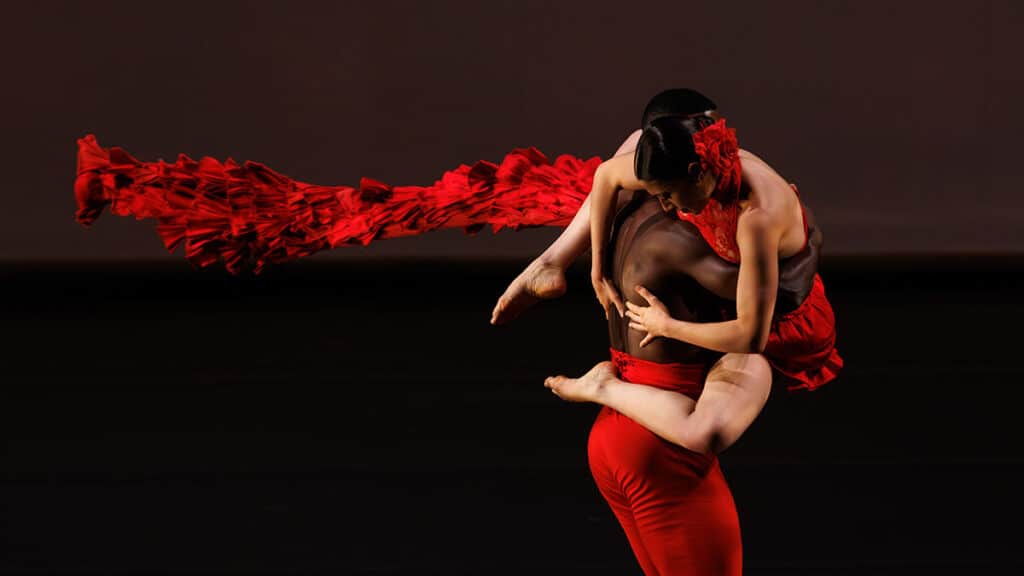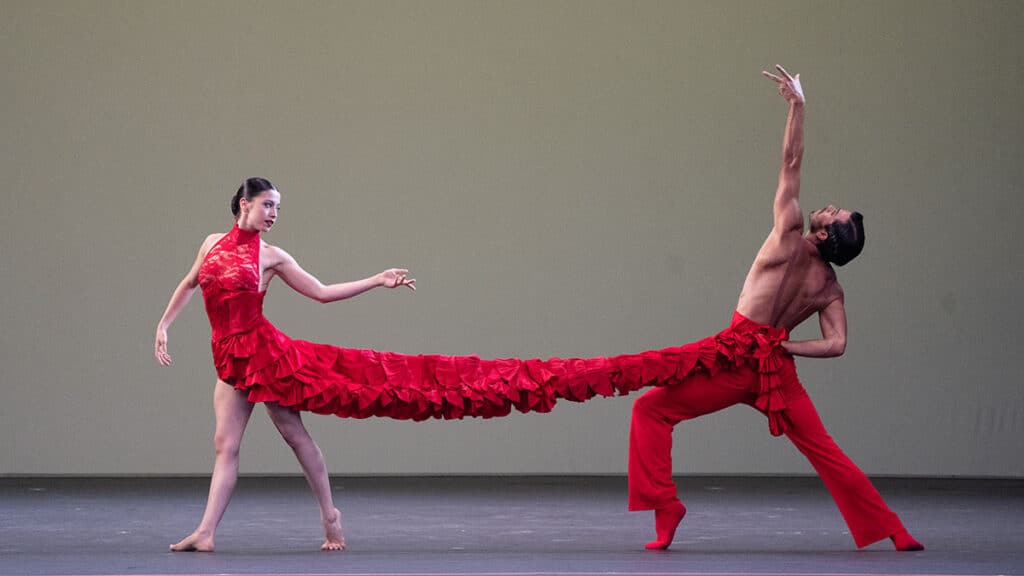Ballet Hispánico, America’s largest Hispanic cultural organization, salutes New York’s and the 92nd Street Y’s role in dance history with a restaging of Talley Beatty’s New York dance club-inspired “Recuerdo de Campo Amor” (1985), Annabelle Lopez Ochoa’s flamenco-inspired “Línea Recta” (2016), and Pedro Ruíz’ Havana dance club-inspired “Club Havana” (2022); in the Kaufmann Concert Hall at the 92nd Street Y, New York in the Upper East Side; on Wednesday, February 21, 2024, at 7:30pm. From $30. 92ny.org 🇺🇸 🇨🇴 🇨🇺 🇪🇸
92nd Street Y Has a Long History of Launching Great Dance Companies
The 92nd Street Y’s 150th Season takes a look back at some of the things that made the 92nd Street Y a legendary home for dance.
92NY played a role in the development of modern dance and contemporary dance. Modern dance pioneers like Martha Graham, Merce Cunningham, Paul Taylor, and Alvin Ailey developed their craft there before anyone knew their names.
Ballet Hispánico at the 92nd Street Y

This performance fits into the 92nd Street Y’s context because Ballet Hispánico has grown from a small community dance company into America’s largest Hispanic cultural organization and an American cultural treasure. Ballet Hispánico now shares stages with Alvin Ailey American Dance Theater, American Ballet Theatre, Dance Theatre of Harlem, and New York City Ballet. This is a company that has arrived.
Ballet Hispánico is both preserving the Latin dance canon, and stretching Latin dance and contemporary dance into new forms. They are doing it very consciously with world-class choreographers. @ballethispanico
Recuerdo de Campo Amor (Talley Beatty, 1985)
The title means roughly “Memories of Love Country.” That’s a good description of a Latin night club. Serious dancers go out just to dance, but most people go out looking for love, or to take their love for a night out. And after a night of good dancing, you wake up the next day with powerful memories of the great dances you had the night before. Most dancers have a few dances, that they will never forget for their entire life.
Social dancing itself is a love ritual. It’s an expression of all the beautiful feelings you want to share with your love interest ~ without actually having sex. If it’s good, you still have the rest of the night.
1970s and 1980s New York City, was a peak time and place in the development of the Latin music and dance that we now call salsa. The template, son Cubano, was around for generations in the Caribbean, but in New York City Puerto Ricans, Cubans, Dominicans, Panamanians, Colombians, and Venezuelans mixed their traditions with New York jazz and disco to create the salsa that we know today.
In her 1986 review of the premiere performance in the “New York Times,” Jennifer Dunning wrote, “It would seem Mr. Beatty has delight in mind. And he is successful.“
Talley Beatty (1918-1995) was one of the great African American choreographers. He was a student of Katherine Dunham who has been called, “the matriarch and queen mother of black dance.” Beatty was born in Shreveport, Louisiana, just up the Mississippi River from New Orleans, America’s Caribbean gateway (long before Miami). His style was a mix between jazz and ballet, with moments of explosive movement. Beatty choreographed over 50 ballets in both America and Europe. That makes him a good fit for Ballet Hispánico’s contemporary dance style. The Company has been performing Beatty’s work at least since the 1980s.
Línea Recta (Annabelle Lopez Ochoa, 2016)

The title means “straight line.” This is a flamenco-inspired contemporary dance. Flamenco dancers usually dance separately, circling one another like a bullfighter and a bull, but don’t touch each other. (The family is watching from the side of the room.)
Flamenco women play with the fabrics of their beautiful flamenco dresses. That dress play, which is in many European and Latin American dance traditions, is a flirtation. Those big ruffles are a metaphor for labia. The dancer teases like she is going to show something, but then doesn’t in a push-pull that creates desire. In most traditions, the hands are kept very visible so there can be no fooling around. It’s an indirect lead into what might happen later that night.
The dance opens in the style of traditional flamenco, but then breaks tradition by bringing dancers together with some exaggerated dress play. This is New York after all, “the city without foreplay.” When things get hot, we’re going to touch. So it’s an interesting reimagining of flamenco. We’re not going to circle around the issue, we’re going straight in that New York state of mind.
Though traditional flamenco dancers may not be touching each other, they are profoundly connected in the dance space. The lines of connection are invisible to the audience. They are something like the lines of a magnetic field. Lopez Ochoa cleverly makes those lines of connection visible with the long flamenco dress trains in this dance. ¡Olé!
Annabelle Lopez Ochoa is a Colombian Belgian international choreographer based in Amsterdam, Netherlands. She choreographs for dance companies around the world and wins awards around the world. She seems to be everywhere lately. @annabellelopezochoa 🇨🇴
Club Havana (Pedro Ruíz, 2022)
The Caribbean and Latin America have many unique traditions, but most Americans know Latin culture through Cuba. Cuba is special. As the seat of Spanish colonial power, whatever happened in Cuba spread across Latin America.
It was in Cuba that Spanish melodies mixed with African rhythms into one of the taproots of what we now call Latin music. What poor and working class Cubans were doing in bars, streets, and in Carnival, was gradually embraced by elites who were dancing the contradanza, the first international social dance which came from Europe. This eventually evolved into salsa dancing.
Latins love to party, and we do it very well. A hundred years ago, Havana was famous for its nightlife. Think Tropicana. “Club Havana” is an imagining of the glory years of dancing in Havana to rumba, mambo, cha cha cha, and more.
“New York Times” dance critic Jennifer Dunning described “Club Havana” as “an explosion of sensuous pure dance.”
Pedro Ruíz is a Cuban choreographer who also trained in Venezuela. He was a Principal Dancer at Ballet Hispánico. “Club Havana” is his signature work. @pruizjr0823
A Passion For Dance
Ballet Hispánico is a Latin contemporary dance company that just keeps getting better. The one thread that runs throughout this performance is Latin passion, a passion for dance, and the passion to preserve and share the best of our culture with the world.
Get tickets at 92ny.org
(Hurry, it is selling out)
